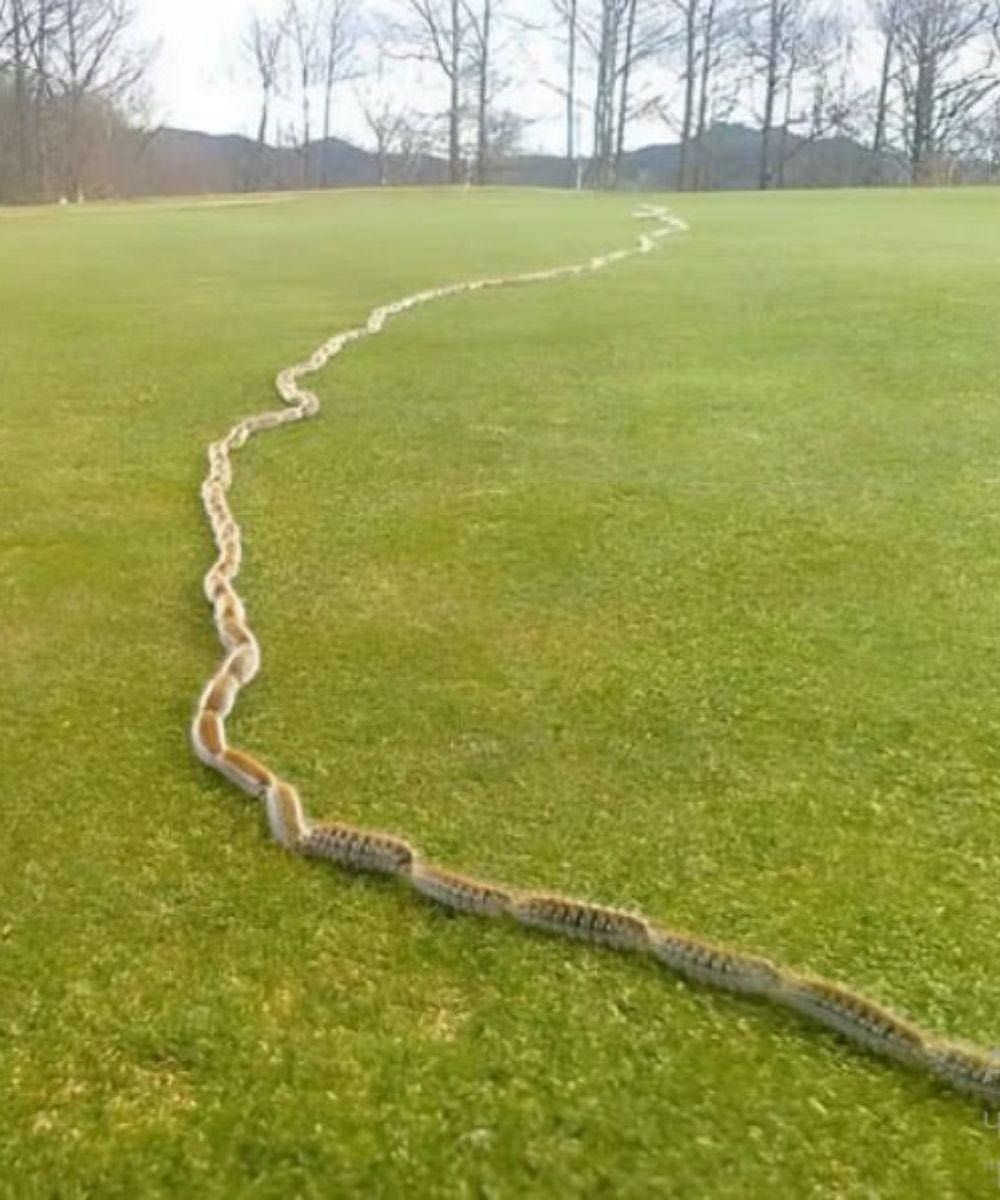
It was one of those calm afternoons when the lawn was bathed in a golden glow and everything seemed at peace. As I strolled through my backyard, something unusual caught my eye lying among the grass blades.
At first glance, it looked like a tattered rope, coiled and resting languidly on the ground. I took a few cautious steps closer, curiosity piqued and my mind racing with possibilities.
My first thought was harmless enough: maybe someone had been working in the yard and accidentally left a rope behind. But as I moved nearer, a strange feeling began to creep over me. There was movement—slight, almost imperceptible—but definitely there. Could it be a snake? A sudden jolt of adrenaline rushed through me.
I was both fascinated and afraid. I quickly grabbed my phone to capture this curious scene. With each step, my senses heightened, and I inched closer to uncover the truth. What I discovered both surprised and relieved me.
The Revelation: A Caterpillar Parade
To my amazement, the supposed snake—or rope—was actually a long line of caterpillars. Nearly 150 of them were crawling in a perfectly coordinated, systematic procession. Each caterpillar followed the one in front of it, forming an unbroken chain across the grass. It was mesmerizing.
I later learned this is a phenomenon observed in some species, such as the pine processionary caterpillar. The behavior is aptly named a “caterpillar train.”
These caterpillars are known for traveling in single-file lines as they search for food or nesting spots. Beyond its hypnotic beauty, the behavior serves practical purposes—like enhancing navigation and protecting the group from predators.
Understanding the Behavior: Nature’s Strategy
The caterpillar train is more than just an oddity—it’s a survival strategy.
By traveling in a unified line, the caterpillars create the illusion of a larger, more formidable organism. This collective motion can deter predators and increase their chances of survival.
The lead caterpillars also release pheromones—chemical signals that guide the rest of the group. This trail helps the caterpillars stay connected and move as one. It’s a stunning example of social behavior and natural coordination in the insect world.
Reflections: The Beauty of Unexpected Encounters
That unexpected sight brought nature’s subtle magic into focus. In our busy lives, it’s easy to overlook these small, quiet wonders. But moments like these invite us to pause, observe, and appreciate the intricate patterns of life that surround us.
What I first mistook for something alarming turned out to be a harmless, even enchanting display of nature’s ingenuity. It challenged my assumptions and reminded me of the power of curiosity over fear.
Embracing Nature’s Lessons
Encounters like this draw us closer to the world we live in. They teach us to be present, to respect all forms of life—no matter how small—and to observe with an open mind.
Every creature plays a role in the balance of our ecosystem. Through awareness and wonder, we gain a deeper appreciation for this interconnected web of life.
In the end, what began as a moment of fright became a moment of awe—a gentle lesson that nature has incredible stories to tell, if only we’re willing to slow down and listen.
The caterpillar train is a quiet marvel—an invitation to stay curious and to find wonder in the places we least expect.



